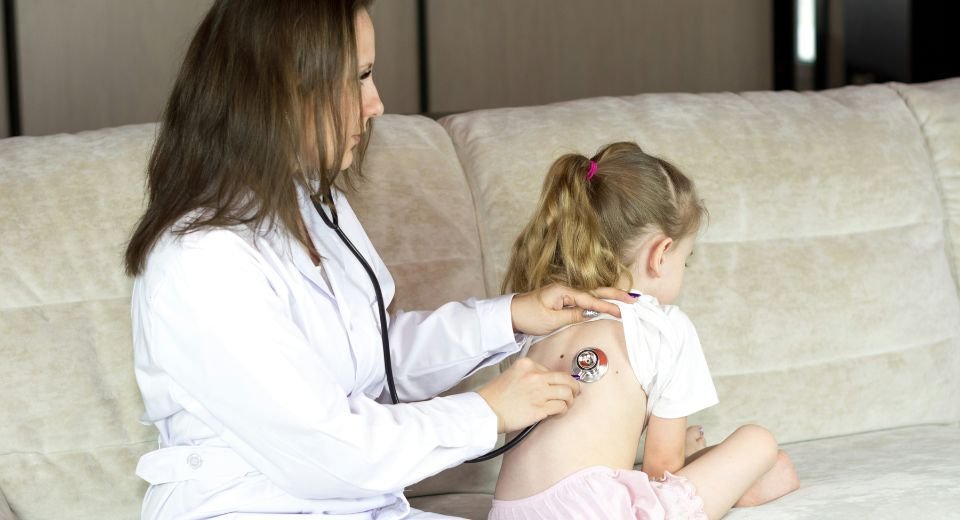HQ Team
February 14, 2025: Multidrug-resistant tuberculosis (MDR-TB) among children worldwide is a “silent epidemic” that needs immediate intervention. New data reveals that over 30,000 children under 15 developed drug-resistant TB in 2022, with nearly 60% going undiagnosed or untreated.
In a recent study published in the journal Pediatric Research, researchers used data from the 2019 Global Burden of Disease to chart out global trends in multidrug-resistant tuberculosis (MDR-TB) incidence and prevalence. Their study focused on children and adolescents (<20 years) between 1990 and 2019.
Multidrug-resistant tuberculosis (MDR-TB) is a form of tuberculosis (TB) caused by bacteria resistant to at least isoniazid and rifampicin, two of the most powerful first-line anti-TB drugs. Children are at higher risk due to underdeveloped immune systems, delayed diagnoses (symptoms mimic pneumonia or malnutrition), and limited child-friendly treatments. Dr. Tereza Kasaeva, Director of WHO’s Global TB Programme, states, “Children face a perfect storm of neglect—poor diagnostics, toxic drugs, and inadequate funding.”
Their findings indicate that multidrug-resistant tuberculosis (MDR-TB) incidence rates have shifted over time, with an overall estimated annual percentage change of 4.15%. There was a sharp increase in cases from 1990 to 2005, a slight decrease between 2005 and 2015, and a resurgence from 2015 to 2019. Eastern Europe, Southern sub-Saharan Africa, and South Asia had the highest numbers of cases. Female children were more likely to be affected than males, and children under five years old were the most likely to die from MDR-TB.
In 2019, approximately 67,710 children and adolescents contracted MDR-TB, resulting in 611,246.97 disability-adjusted life years (DALYs) and 7,061.39 deaths.
A meta-analysis showed that only 73% of children in developing countries successfully complete MDR-TB treatment, compared to 87% in developed nations.
Additional key statistics
- 30,000+ children contracted MDR-TB in 2022, a 40% increase from 2020 (WHO).
- Diagnosis gaps: Only 45% of pediatric MDR-TB cases are detected, compared to 68% in adults (The Lancet Global Health).
- Treatment success rates for children stand at 54%, far below the 85% target (WHO).
- High-risk regions: India, South Africa, and the Philippines account for 60% of global pediatric MDR-TB cases (UNICEF).
Barriers to combatting pediatric MDR-TB
There are many hurdles to the diagnosis and treatment of MDR-TB. Sputum-based tests often fail in children, who swallow mucus instead of coughing it up. New molecular tests like GeneXpert are underused in low-income settings.
MDR-TB regimens last up to 24 months, involving daily injections and pills that cause severe side effects like hearing loss. Only 25% of countries stock child-appropriate drug formulations (MSF).
Over 80% of pediatric MDR-TB cases occur in low-income countries with fragmented health systems. Malnutrition and HIV co-infections worsen outcomes.
Global disparities and risk factors
- India: Accounts for 27% of cases, driven by overcrowding and delayed care-seeking (National TB Report 2023).
- Sub-Saharan Africa: HIV co-infection rates exceed 30%, doubling mortality risks (WHO AFRO).
- Ukraine: Conflict has disrupted TB services, with cases rising 15% since 2021 (Stop TB Partnership).
The TB care gap stands at $5.4 billion annually. There is a need to scale up GeneXpert and urine-based assays for faster diagnoses. Safer, short-term regimens like the 6-month BPaL (bedaquiline, pretomanid, linezolid) trial showing 90% efficacy in kids (NEJM) need to be utilised.
Also, integrating TB screening into maternal and child health programs will help
Advances in TB prevention medicines are ongoing. The M72/AS01E candidate reduced TB incidence by 50% in phase II trials, funded by the Gates Foundation.
In Mozambique, village health workers reduced pediatric TB deaths by 35% through home screenings.
Dr. Lucica Ditiu of the Stop TB Partnership emphasizes, “No child should die from a curable disease. We have the tools—what we lack is urgency.” With World TB Day approaching on March 24, advocates demand immediate action to protect this vulnerable population.
